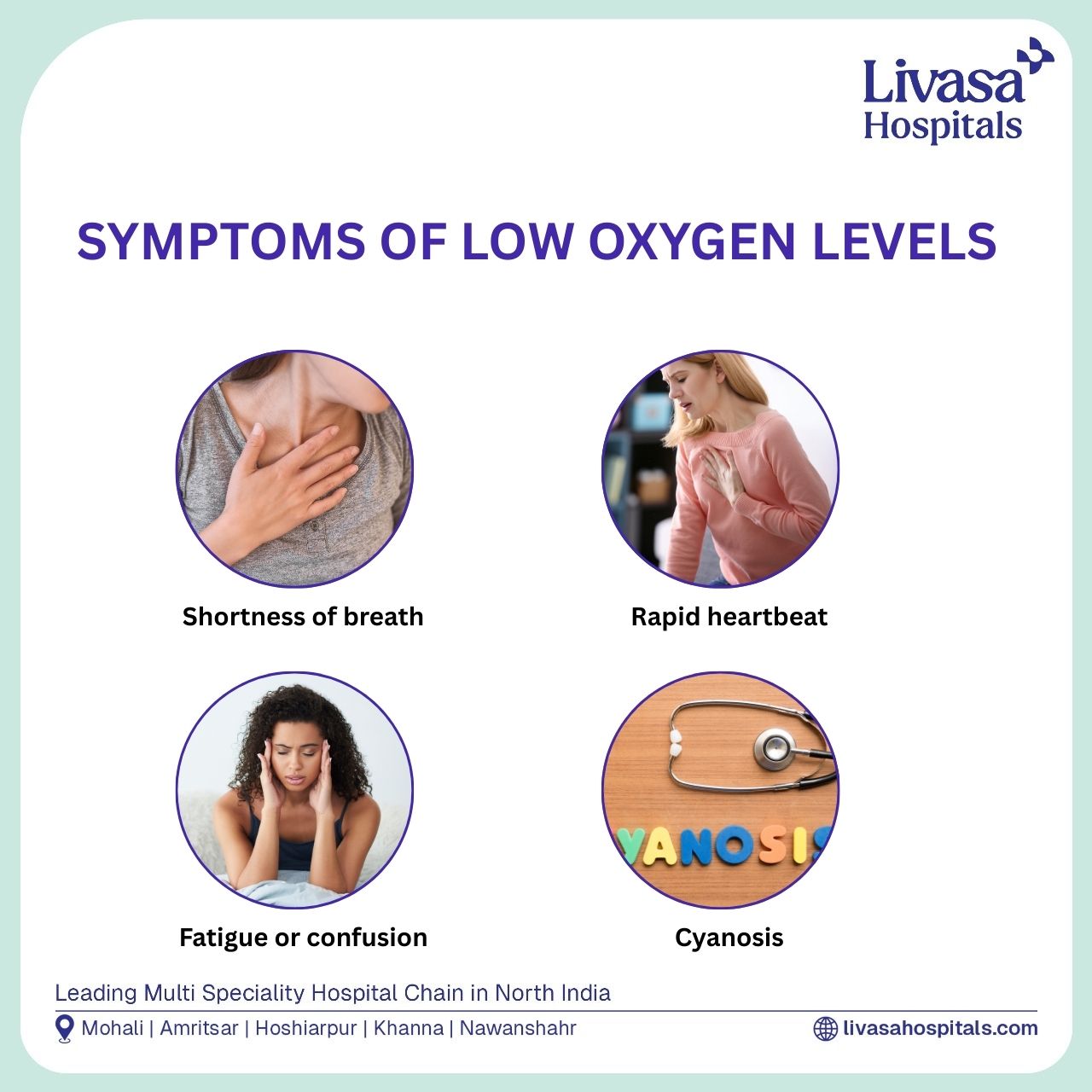19 Dec 2025
Age Specific Related to Psoriasis in Amritsar


Dr. Puneet Kumar
04 Feb 2025
Call +91 80788 80788 to request an appointment.
Blood oxygen levels are a vital indicator of overall health and well-being. They represent the amount of oxygen circulating in the blood and being delivered to tissues and organs. Maintaining optimal oxygen levels is crucial for bodily functions, as oxygen is required for energy production and the survival of cells. In this blog, we will explore what blood oxygen levels mean, how they are measured, what normal levels are, and the potential health implications of abnormal readings.
Understanding Blood Oxygen Levels
Blood oxygen levels indicate the percentage of oxygen bound to hemoglobin in red blood cells. Hemoglobin transports oxygen from the lungs to the rest of the body and returns carbon dioxide to the lungs for exhalation. When oxygen levels are within the normal range, the body functions efficiently.
How Are Blood Oxygen Levels Measured?
lood oxygen levels are typically measured in two ways:
What Are Normal Blood Oxygen Levels? For most healthy individuals, blood oxygen levels should fall within the following ranges:
Low Blood Oxygen Levels (Hypoxemia): Causes and Symptoms When oxygen levels drop below normal, it can lead to hypoxemia. Common causes include:
Symptoms of Low Oxygen Levels:

High Blood Oxygen Levels (Hyperoxia): Causes and Risks While rare, excessively high oxygen levels can occur in certain situations, such as overuse of supplemental oxygen. Hyperoxia can cause cellular damage and complications in specific cases, including patients on mechanical ventilation. Maintaining Healthy Blood Oxygen Levels To support optimal oxygen levels:
When to Seek Medical Attention If you experience symptoms like persistent shortness of breath, chest pain, or confusion, consult a healthcare provider. These may indicate a severe issue requiring immediate intervention. Blood oxygen levels are a critical aspect of health, reflecting how well oxygen is delivered to the body. Monitoring and maintaining these levels can prevent complications and ensure a healthier life. Always consult a healthcare professional for personalized advice.
+91 80788 80788
Livasa Healthcare Group Corporate Office,Phase-8, Industrial Area, Sector 73, Sahibzada Ajit Singh Nagar, Punjab 160071
livasacare@livasahospitals.in
| Mohali | +91-99888 23456 |
| Amritsar | +91-99887 49494 |
| Hoshiarpur | +91-99883 35353 |
| Nawanshahr | +91-75081 82337 |
| Khanna | +91-98888 05394 |